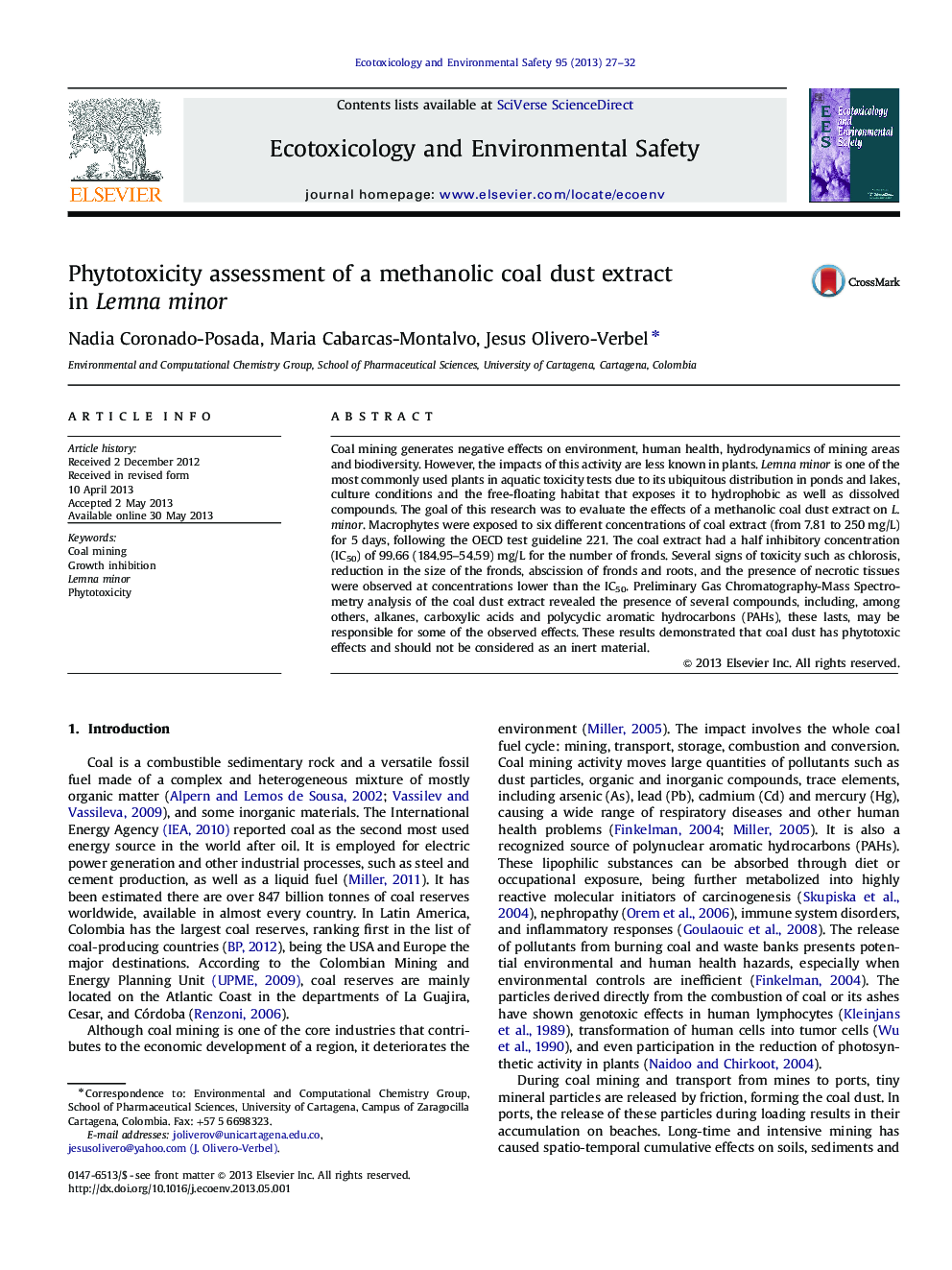| Article ID | Journal | Published Year | Pages | File Type |
|---|---|---|---|---|
| 4420336 | Ecotoxicology and Environmental Safety | 2013 | 6 Pages |
•Lemna minor was used to assess the phytotoxicity of a coal extract.•Alkanes, carboxylic acids and PAHs were present in the coal extract.•The coal extract had a IC50 of 99.7 mg/L for the number of fronds.•Coal induced chlorosis, fronds size reduction and necrosis in macrophytes.•Duckweed is a good model for the phytotoxicity of coal extracts.
Coal mining generates negative effects on environment, human health, hydrodynamics of mining areas and biodiversity. However, the impacts of this activity are less known in plants. Lemna minor is one of the most commonly used plants in aquatic toxicity tests due to its ubiquitous distribution in ponds and lakes, culture conditions and the free-floating habitat that exposes it to hydrophobic as well as dissolved compounds. The goal of this research was to evaluate the effects of a methanolic coal dust extract on L. minor. Macrophytes were exposed to six different concentrations of coal extract (from 7.81 to 250 mg/L) for 5 days, following the OECD test guideline 221. The coal extract had a half inhibitory concentration (IC50) of 99.66 (184.95–54.59) mg/L for the number of fronds. Several signs of toxicity such as chlorosis, reduction in the size of the fronds, abscission of fronds and roots, and the presence of necrotic tissues were observed at concentrations lower than the IC50. Preliminary Gas Chromatography-Mass Spectrometry analysis of the coal dust extract revealed the presence of several compounds, including, among others, alkanes, carboxylic acids and polycyclic aromatic hydrocarbons (PAHs), these lasts, may be responsible for some of the observed effects. These results demonstrated that coal dust has phytotoxic effects and should not be considered as an inert material.
